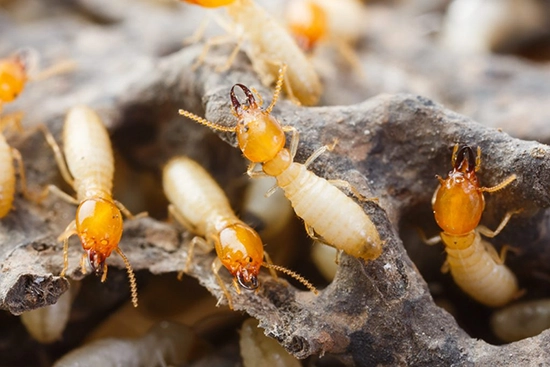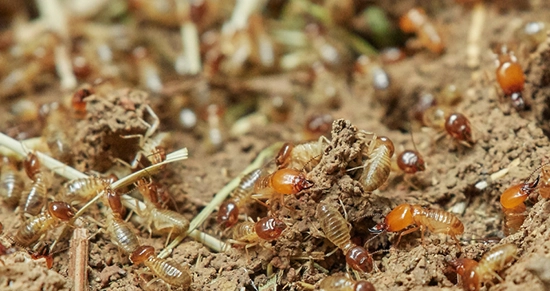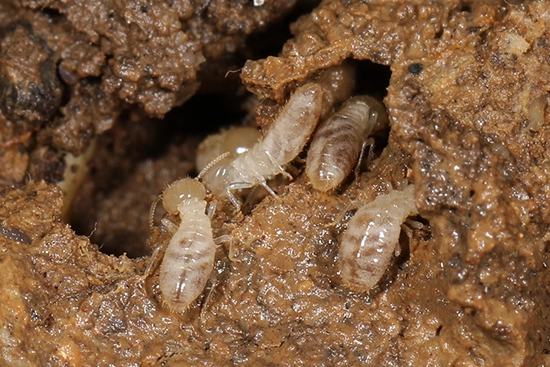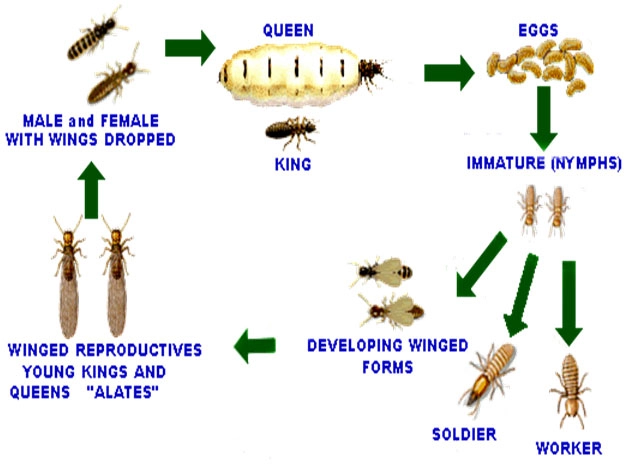Did you know? Termites have been around since the time of the dinosaurs!
EXPLORE TERMITES
- Dampwood Termites
- Drywood Termites
- Formosan Termites
- Subterranean Termites
Termites are known as “silent destroyers” because of their ability to chew through wood, flooring and even wallpaper undetected. There are about 2,000 known termite species in the world. Each year, termites cause more than $5 billion in property damage.

WHAT ARE TERMITES
- Subterranean termites are social insects
- They live in family groups called colonies
- wherelabor is divided among a caste system.

- Three distinct types of individual termites: reproductives (kings and queens), soldiers and workers.
- Termite are placed in a separate order called ISOPTERA
- ISOPTERA means ‘equal Winged’ having two pairs of wings of similar size and shape of the winged adults
- The total weight of all of the termites in the world is more than the weight of all the humans in the world.
- Termite colonies eat non-stop, 24 hours a day, seven days a week!
- Termites have wings that they shed once they have found a good place to build a nest.
WHAT DO TERMITES EAT?
- Decayed Wood and live wood
- Paper & paper products
- Furnitures
- Furnishings
- Clothings
- Stationery
- Anything of organic origin with cellulosic base
SIGNIFICANCE OF TERMITE DAMAGE
- World Termite damage runs into Crores of rupees every year.
- The world wide termite damage is more than the damage caused by FIRE,strom and Earth quakes all combined

FOOD AND FEEDING HABITS:
Termites are mostly herbivores and detritivores
They consume wide range of wood, living and dead plants, faeces, etc
Termites largely feed on cellulose and lignocellulose, and they are known to process 50–100% of dead plant and decaying biomass in the tropical areas

CONDITIONS THAT FAVOR TERMITE INFESTATION IN BUILDING
- Termite need a moisture supply.
- Moist ,warm soil with adequate food material like decayed wood and paper etc.
- Wooden members directly in contact with soil.
- Root stumps ,stakesetc in contact with soil under and around the building.
- Inadequate and improper drainage ventilation and lighting
- Cracks &crevices ,voids in masonry,floor and foundations through which termites can get entry into the building .
- Termite mounds or colonies in the building site or near by the site.
- Improper management of rain water draining ( termite are more likely to infest damp soil.)
ROUTS OF ENTRY
- Drainage pipes
- Through walls
- Electric cables
- Service pipelines
- Lift well or any other shaft
- Expansion Joint
- Termite can pass through gaps of even 0.5 mm width.
- They find their way into the building through cracks & crevices in masonry, Junction of wall and floor